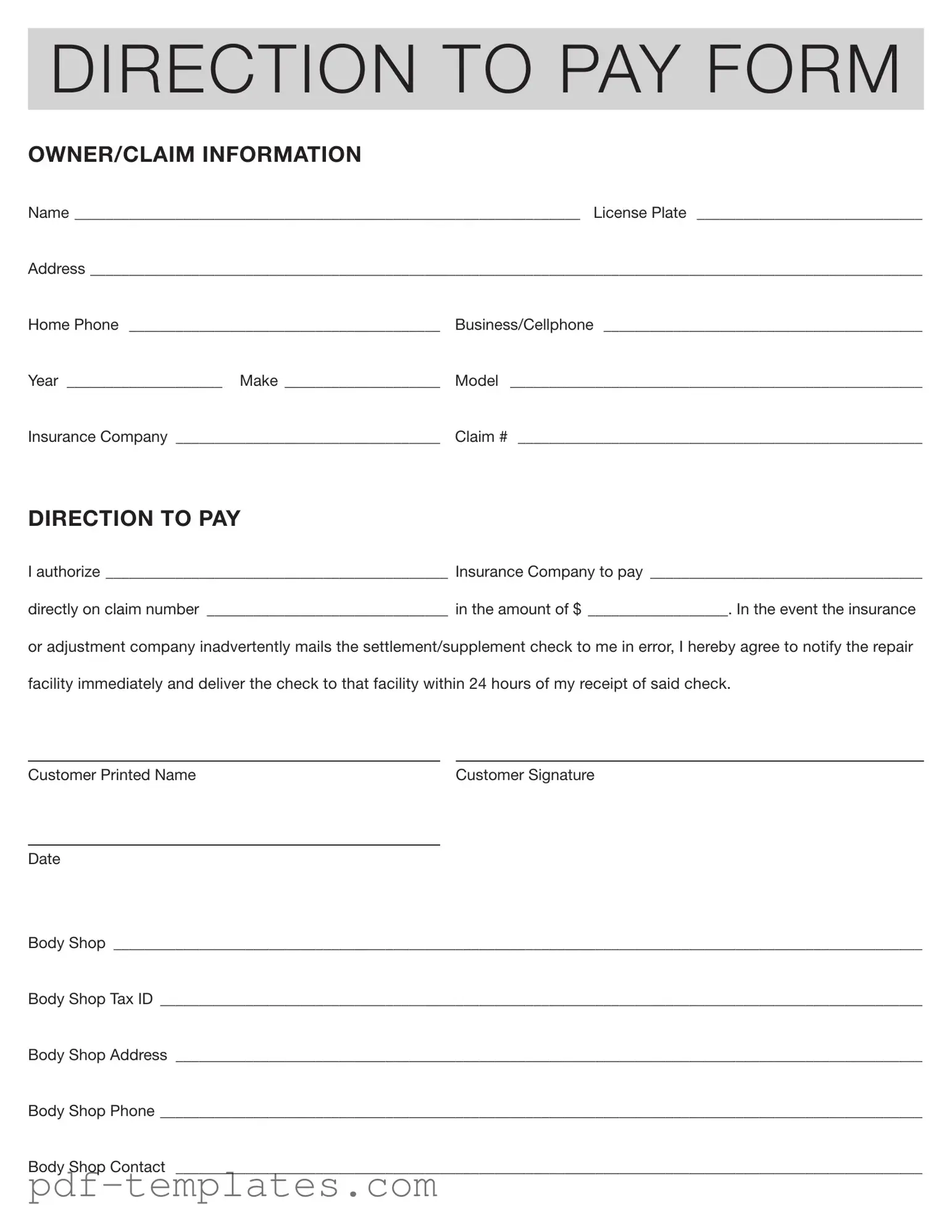The Authorization and Direction to Pay form is similar to the Power of Attorney document. Both forms grant authority to another party to act on behalf of an individual. In the case of a Power of Attorney, this authority can cover a wide range of decisions, including financial and legal matters. The Authorization and Direction to Pay form, however, is specifically focused on directing payment for a claim, making it a more limited but equally important document.
Another document that shares similarities is the Assignment of Benefits form. This form allows a policyholder to transfer their rights to receive benefits from an insurance policy to a third party, such as a healthcare provider or repair facility. Like the Authorization and Direction to Pay form, it streamlines the payment process by allowing the insurance company to pay the designated party directly, reducing the administrative burden on the policyholder.
The Release of Liability form also bears resemblance to the Authorization and Direction to Pay form. While the former releases one party from liability in exchange for compensation, it often requires the claimant to direct payment to a specific entity, similar to how the Direction to Pay form specifies who should receive payment from the insurance company.
A Settlement Agreement is another document that aligns with the Authorization and Direction to Pay form. In a settlement, parties agree on compensation for a claim, and the agreement often includes provisions for directing payment. This ensures that the agreed-upon amount is paid to the correct party, just as the Direction to Pay form does.
The Invoice is a common document that shares a purpose with the Authorization and Direction to Pay form. An invoice outlines the amount owed for services rendered, and when paired with the Direction to Pay form, it can specify that payment should be made directly to a service provider, facilitating a smoother transaction process.
For those interested in opportunities at Trader Joe's, it's essential to complete the necessary application forms accurately. The Trader Joe's application form is an opportunity for job seekers to highlight their qualifications and stand out to potential employers. To begin this process, you can access the form at https://documentonline.org/blank-trader-joe-s-application, ensuring that you provide all required information to maximize your chances of success.
Similarly, the Claim Form is an essential document in the insurance process. It provides the details of the claim and often includes information on how payments should be directed. While the Claim Form initiates the process, the Authorization and Direction to Pay form finalizes the payment direction, ensuring that funds are allocated correctly.
The Payment Authorization form also aligns closely with the Authorization and Direction to Pay form. This document allows an individual to authorize a business or service provider to withdraw funds directly from their account. Both forms streamline the payment process, ensuring that the right party receives payment without unnecessary delays.
The Direct Deposit Authorization form is another document that shares similarities. It allows individuals to authorize their bank or financial institution to deposit funds directly into their account. While it focuses on bank transactions, the underlying principle of directing payments to a specific recipient is common to both this form and the Authorization and Direction to Pay form.
Another related document is the Third-Party Payment Authorization. This form allows a policyholder to authorize a third party to receive payment on their behalf. It serves a similar function to the Direction to Pay form, ensuring that payments are made to the correct entity without the policyholder needing to intervene.
Lastly, the Endorsement form is akin to the Authorization and Direction to Pay form in that it allows for the transfer of rights or benefits from one party to another. In insurance contexts, endorsements can modify coverage or direct payments, much like how the Direction to Pay form specifies who should receive payment for a claim.
